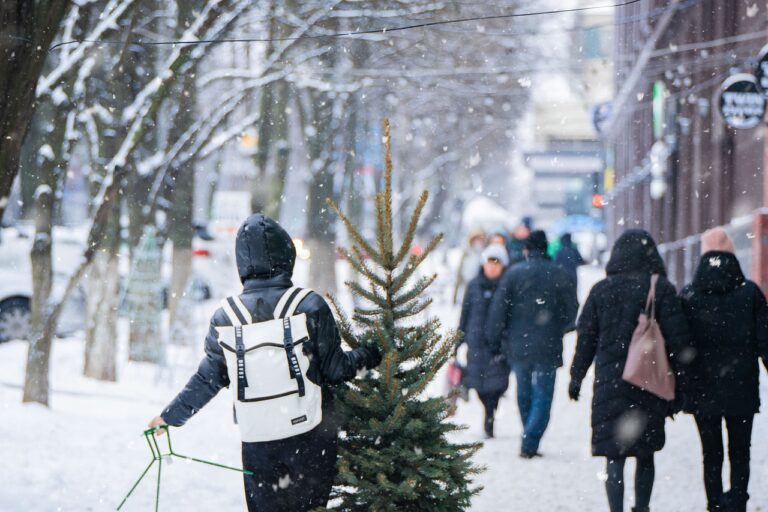Stay active, keep your balance, and enjoy the season on your terms.
TL;DR: You can keep walking safely in winter by stacking a few high-value habits: good footing (boots with grip + removable ice cleats), smart routes (cleared, well-lit paths or indoor alternatives), and a 5–7 minute balance routine most days. Add simple checks (medications, vision, cane tips/ice pick)and use a two-minute pre-walk checklist. Evidence-based fall-prevention guidance favors exercise and environmental fixes over quick pills, and traction aids do reduce falls on ice.

If icy sidewalks have ever made you rethink your daily walk, you’re not alone. Falls rise in winter, and older adults pay the biggest price, in injuries, lost confidence, and lost independence. The fix isn’t hiding inside for three months; it’s walking smarter. With the right footing, a few route tweaks, and a short balance routine, you can keep moving and feel steadier, even when the weather isn’t. Public-health guidance in the U.S. and Canada consistently points to exercise (balance/gait/mobility) and environment changes (surface, lighting, traction) as the most effective ways to prevent falls.
Why winter walking is worth it (and how risky it really is)
In Canada, falls are the leading cause of injury-related hospitalizations among older adults, and thousands die from fall injuries each year; the risk rises with age. In 2021, 6,579 Canadians aged 65+ died due to falls. Nationally, among adults 65+, about 61% of reported injuries were due to falls. The pattern is similar in the U.S., where falls are a leading cause of injury among older adults and a priority for CDC’s STEADI initiative. None of that means “stay home”; it means equip yourself.
Your four-part winter walking plan
1) Footing first: boots, cleats, and canes that actually help
- Boots that bite the ground. Look for non-slip rubber soles, a tread that channels slush, and a wide, low heel. Waterproof and insulated boots help you stay out longer without numb feet (numb feet = clumsy feet). Provincial and local public-health handouts echo these basics every winter.
- Removable traction aids (ice cleats). On ice and hard-packed snow, over-shoe ice grippers reduce falls, and randomized evidence supports this. Just remember to take them off indoors (on tile/stone, they become dangerously slippery).
- Canes & walkers. If you use a cane, check the rubber tip; in winter, a retractable ice pick add-on boosts grip; flip it up before going inside. If you use a walker, make sure the wheels and glide caps have good tread. Government fall-prevention sheets emphasize correct height and safe tips.
Quick fit check: In your boots, can you rock heel-to-toe without wobbling? Do your cleats go on/off while seated (easier and safer)? If not, swap models.
2) Routes, timing, and light: let the conditions work for you
- Pick friendlier surfaces. Choose cleared, sanded/salted sidewalks and multi-use paths. If your neighborhood is sloppy, switch to mall laps, indoor tracks, or a large grocery or museum during off-hours. Local and national fall-prevention campaigns (including Canada’s Fall Prevention Month partners) encourage adapting routes to conditions.
- Chase daylight; add light when you can’t. Walk in daylight when possible. If you need an evening walk, add a clip-on light or headlamp and reflective elements so others can see you.
- Pace and posture. On glare ice, shorten your stride and “walk like a penguin,” with feet slightly out, weight over the front foot. Municipal senior-winter guidance recommends spikes/poles and mindful stepping when surfaces are slick.
3) Balance & strength: the five-minute routine you’ll actually do
You don’t need a gym. The U.S. Preventive Services Task Force recommends exercise to prevent falls in community-dwelling adults 65+ at increased risk (Grade B). That means balance, gait, and mobility work; tiny doses count if you do them most days.
Try this 5–7 minute sequence before you head out (kitchen counter support if needed):
- Sit-to-stand x10. Slow up, slow down.
- Heel-to-toe stand, 30 seconds each foot. Light fingertip on the counter.
- Side steps along the counter, 2 passes. Hips tall, toes forward.
- Mini-calf raises x10. Pause at the top.
- Gentle ankle circles, 10 each way.
- Head turns (slowly look left/right) while standing steady, 5 each side.
Add two days/week of a longer balance or Tai Chi class when you can; group exercise is strongly associated with better gait and fewer falls. (CDC’s STEADI program builds clinical tools around this principle.)
4) Backups that make winter easier
- Buddy system. Walk with a neighbor or set a “home safe” text you send when you return.
- Micro-grit bag. A sandwich bag with cat litter/sand can save you at one icy curb.
- Phone + ID. Keep your phone charged and carry ID in an accessible pocket.
- Skip days without guilt. If sidewalks glaze over, go indoors and keep the streak: mall, rec center track, or a hallway loop with music. Consistency beats bravado.
The two-minute pre-walk checklist
Stick this by the door. After a week, it becomes automatic.
- Footwear ready: grippy soles; cleats on if it’s icy (and plan to remove them indoors).
- Assistive gear: cane, ice pick down; rubber tips OK; poles if you like them.
- Route chosen: cleared path or indoor alternative; daylight if possible.
- Visibility: reflective bit + simple light if dim.
- Pace: short steps on slick spots; “penguin” stance if needed.
- Check-in plan: buddy or “home safe” text.
Medications, vision, and other quiet trip-wires
Some risks live in your medicine cabinet and glasses case. The USPSTF supports individualized, multifactorial fall-prevention decisions (alongside exercise), and CDC’s STEADI resources include medication review and vision checks because sedating meds, blood pressure drops, and poor contrast sensitivity can nudge you off balance, especially in winter. Ask your pharmacist or clinician to review meds that increase dizziness or drowsiness; book a vision check if you’re squinting at curbs and steps.
What about vitamin D?
It’s useful for bone health when you’re deficient, but broad supplementation hasn’t shown meaningful fall-prevention benefits for most community-dwelling older adults. Evidence syntheses and task-force reviews find exercise beats pills for fall prevention. Put your energy into movement, traction, and environment first; talk with your clinician about vitamin D based on your lab values and health history.
If you do slip: a calm plan
- Don’t rush to get up. Breathe and scan for pain.
- Roll to your side, rise to hands/knees, and use a stable support (bench, wall).
- Call for help if you feel dizzy, can’t bear weight, hit your head, or take blood thinners.
- Report the near-miss. Tell your family/doctor and note what made the spot risky (dark patch, slope, black ice). Small fixes (route change, different cleats) prevent repeats. Public-health agencies encourage reporting falls/near-falls to adjust your plan.
A 14-Day Confidence Plan (keep what works for you)
Day 1–3:
- Do the 5–7 min balance routine daily.
- Map two indoor options (mall, community center) and your best outdoor loop.
Day 4–7:
- Add ice cleats on icy days; practice taking them on/off seated.
- Set a “home safe” check-in with a friend.
Day 8–10:
- Book a medication/vision review (pharmacist/optometrist).
- Add one longer balance session (class or 15-minute home video).
Day 11–14:
- Audit your entryway (mat, a chair for cleat removal, a bin for salt/sand).
- Celebrate streaks (number of walks, balance sessions, or indoor swaps).
By two weeks, you’ll feel smoother on your feet and more confident deciding when to walk outside and when to pivot indoors. That judgment is a strength, not a step back.
Why this plan works (the evidence in plain Enlish)
- Exercise prevents falls. The USPSTF recommends exercise interventions for adults 65+ at increased fall risk (Grade B). Balance, gait, and mobility work improve how you react when a foot slips.
- Traction aids reduce falls on ice. A Cochrane review found anti-slip devices worn in icy conditions reduced the rate of falls compared with no device. Use them outdoors—remove indoors so you don’t skate across tile.
- Environmental tweaks matter. Home and environmental interventions (surfaces, lighting, assistive devices) reduce hazards; public-health toolkits in both countries build on these changes.
Resources worth bookmarking
- CDC STEADI (U.S.): Patient/caregiver resources and fall-prevention tips you can print. (https://www.cdc.gov/steadi/index.html)
- USPSTF recommendation (2024): What evidence says about exercise and multifactorial strategies. (https://www.uspreventiveservicestaskforce.org/uspstf/recommendation/falls-prevention-community-dwelling-older-adults-interventions)
- Public Health Agency of Canada: surveillance & guidance: Falls among older adults in Canada; You CAN Prevent Falls! (https://www.canada.ca/en/public-health/services/publications/healthy-living/surveillance-report-falls-older-adults-canada.html)
- Fall Prevention Month (Canada): November campaign with year-round tools and checklists. (https://www.fallpreventionmonth.ca/)
- Ottawa Public Health (tip sheet): Cane ice pick and winter-specific advice. (https://www.ottawapublichealth.ca/en/public-health-topics/prevent-falls.aspx)
If you found this interesting, try the two-minute pre-walk checklist this week and tell me what changed. Then check out the Beyond Retirement podcast: listen to past episodes, and suggest guests. We’re interviewing retirees about expectations vs. reality in retirement. Your story (or your walking buddy’s) could be the next episode.

